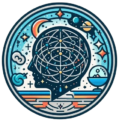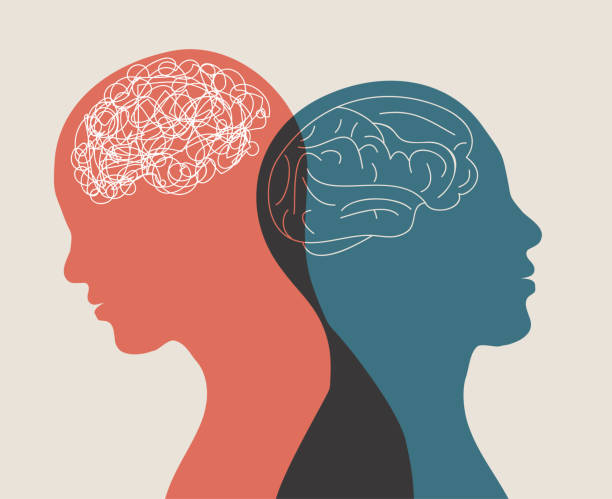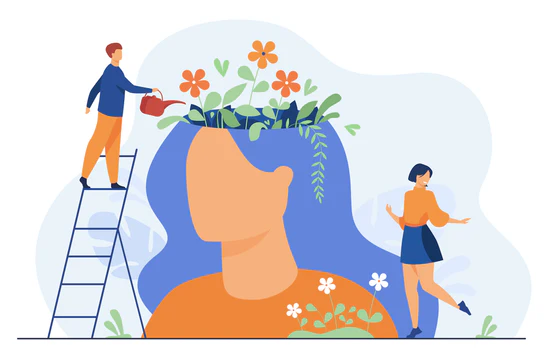Introdution
Every year on the full moon day of the Hindu month of Ashadha (June–July), millions of people across India, Nepal, and parts of Southeast Asia pause to honor a vital yet often underappreciated role in their lives: the guru. Guru Purnima is more than a cultural tradition, it is a psychological phenomenon rooted in human development, gratitude, and our deep-seated need for mentorship.
But what makes the figure of a guru so psychologically impactful? And why does gratitude toward mentors feel so transformative? Let’s explore the science and soul behind this luminous celebration.
Read More- Tagore and the Lessons We Can Learn From Him
Who is a Guru?
The Sanskrit word guru means “dispeller of darkness” (gu = darkness, ru = remover). In Indian tradition, a guru is not just a subject teacher or coach; they are a guide for personal evolution, helping one transcend ignorance and ego.
Psychologically, this aligns with Albert Bandura’s social learning theory, which emphasizes how much of human behavior is learned through observing and modeling others (Bandura, 1977). Gurus serve as behavioral templates, influencing not just knowledge, but habits, emotions, values, and identity.
Whether it’s a school teacher, parent, spiritual leader, therapist, or boss, anyone who plays this developmental role can be considered a guru.
The Psychology of Mentorship
At the heart of Guru Purnima is mentorship, a relationship central to human thriving. Psychologists have long shown that mentorship improves motivation, confidence, self-esteem, and resilience (Allen et al., 2004).
In Erik Erikson’s psychosocial development theory, adolescence to adulthood involves resolving the challenge of identity vs. role confusion (Erikson, 1950). Mentors provide a mirror and a map, reflecting our potential and guiding us toward our best selves. They offer scaffolding, temporary support that lets us reach higher levels of functioning, a concept first introduced by Vygotsky (1978).

Even in adulthood, we never stop needing guidance. Research shows that employees with mentors experience more career satisfaction, organizational commitment, and lower stress levels (Eby et al., 2008). In fact, mentorship is linked to greater neuroplasticity, the brain’s ability to adapt and grow, by exposing individuals to new perspectives and challenges (Davidson & Begley, 2012).
Why Gratitude is Good for the Brain
Guru Purnima is, above all, an expression of gratitude. The ceremony, the rituals, the heartfelt messages, it’s a formal acknowledgment of how someone else’s light has helped shape our path.
But here’s the powerful twist: gratitude isn’t just good manners; it’s good psychology.
According to studies by Emmons and McCullough (2003), practicing gratitude improves mental well-being, sleep quality, and physical health. When people express appreciation, they report fewer toxic emotions like envy and regret, and more happiness and optimism.
Gratitude activates the ventromedial prefrontal cortex, a brain region associated with decision-making, reward, and emotional regulation (Fox et al., 2015). In essence, when we say “thank you” to our gurus, we’re strengthening not just our relationships—but also our own resilience and happiness.

The Power of Ritual and Symbolism
Why do we need a day like Guru Purnima? Why not just thank our mentors every day?
Here’s where culture meets cognitive science. Rituals, including those performed during Guru Purnima (like touching a teacher’s feet or offering flowers), serve as emotionally salient experiences that deepen memory and meaning (Legare & Souza, 2012). They promote social cohesion and help encode values like respect, humility, and devotion.
Moreover, rituals give us psychological closure. They formalize what may otherwise remain unspoken—the silent acknowledgment of someone’s impact on our lives.
Modern Gurus
While Guru Purnima has spiritual roots, especially in honoring Sage Vyasa, the author of the Mahabharata, the modern relevance extends well beyond religious frameworks.
In today’s world, our gurus could be:
- A therapist who helped us recover from trauma
- A professor who challenged us to think differently
- A grandparent whose stories shaped our ethics
- A YouTube creator whose free lessons changed our career
- Even an author, alive or long gone, whose words woke something inside us
By expanding the definition of guru, Guru Purnima becomes radically inclusive, allowing everyone to participate in a meaningful celebration of growth and guidance.
The Shadow Side
Not all gurus are wise or benevolent. History is replete with examples of exploitative spiritual leaders or manipulative mentors.
Psychology offers explanations. The “guru effect”, coined by philosopher Daniel Dennett, refers to our tendency to treat ambiguous or complex statements as profound when uttered by authority figures (Sperber, 2010). This can lead to blind devotion and cognitive distortion.

Healthy mentorship involves critical thinking, mutual respect, and ethical boundaries. A true guru, like Carl Rogers’ ideal therapist, provides unconditional positive regard while encouraging authenticity, not dependency (Rogers, 1951).
How to Celebrate Guru Purnima Mindfully
You don’t need to follow traditional rituals to honor this day meaningfully. Here are some psychologically grounded ways to celebrate:
- Write a Letter of Gratitude – Reach out to a mentor past or present and tell them how they influenced your life. Research shows that even writing (not necessarily sending) a gratitude letter improves well-being (Seligman et al., 2005).
- Mentor Someone Else – If you’ve received wisdom, share it. Helping others grow strengthens your own sense of purpose and self-worth (Schwartz & Sendor, 1999).
- Reflect on Your Inner Guru – Through journaling or meditation, connect with the wisdom within you. The ultimate aim of all mentorship is to make you self-reliant.
- Read or Listen to a Mentor Figure – Choose a podcast, book, or video from someone you admire. Learning can be a form of homage.
Conclusion
Guru Purnima is not just about bowing to someone else; it’s about honoring the journey of becoming. By recognizing those who guided us, we reinforce our own potential to become mentors, guides, and wise selves.
In a world hungry for connection and authenticity, perhaps what we need most is not more information but more gurus: people who light the way not with perfection, but with presence.
So this Guru Purnima, light a lamp. Send a message. Say thank you. And most importantly, become someone’s guiding light.
References
Allen, T. D., Eby, L. T., Poteet, M. L., Lentz, E., & Lima, L. (2004). Career benefits associated with mentoring. Journal of Applied Psychology, 89(1), 127–136.
Bandura, A. (1977). Social Learning Theory. Prentice-Hall.
Davidson, R. J., & Begley, S. (2012). The Emotional Life of Your Brain. Hudson Street Press.
Emmons, R. A., & McCullough, M. E. (2003). Counting blessings versus burdens. Journal of Personality and Social Psychology, 84(2), 377–389.
Eby, L. T., Allen, T. D., Evans, S. C., Ng, T., & DuBois, D. L. (2008). Does mentoring matter? Journal of Vocational Behavior, 72(2), 254–267.
Erikson, E. H. (1950). Childhood and Society. Norton.
Fox, G. R., Kaplan, J., Damasio, H., & Damasio, A. (2015). Neural correlates of gratitude. Frontiers in Psychology, 6, 1491.
Legare, C. H., & Souza, A. L. (2012). Evaluating ritual efficacy. Cognition, 124(1), 1–15.
Rogers, C. R. (1951). Client-Centered Therapy. Houghton Mifflin.
Schwartz, C., & Sendor, M. (1999). Helping others helps oneself. Journal of Abnormal Psychology, 108(3), 532–537.
Seligman, M. E. P., Steen, T. A., Park, N., & Peterson, C. (2005). Positive psychology progress. American Psychologist, 60(5), 410–421.
Sperber, D. (2010). The guru effect. Review of Philosophy and Psychology, 1(4), 583–592.
Vygotsky, L. S. (1978). Mind in Society. Harvard University Press.
Subscribe to PsychUniverse
Get the latest updates and insights.
Join 3,030 other subscribers!
Niwlikar, B. A. (2025, July 11). 4 Important Ways to Celebrate Guru Purnima Mindfully. PsychUniverse. https://psychuniverse.com/guru-purnima/



